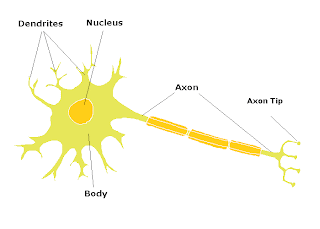
Hodgkin and Huxley received the 1963 Nobel Prize in Physiology of Medicine for this work.
[They shared it with John Eccles from ANU]. The Nobel Foundation has a really nice educational "game" on Nerve Signaling.
Nelson notes,
"Many biophysicists regard this work as one of the most beautiful and fruitful examples of what can happen when we apply the tools and ideas of physics to a biological problem."Biological question: How can a leaky cable (e.g., a neuron) carry a sharp electrical signal over long distances?
Physical idea: Nonlinearity in the cell membrane's conductance turns the membrane into an excitable mdedium, which can transmit waves by continuously regenerating them.
Again, Nelson has really helpful section headings, including:
12.1.2 The cell membrane can be viewed as an electrical network
12.1.3 Membranes with Ohmic conductance lead to a linear cable equation with no traveling wave solutions
12.2.4 The time course of an action potential suggests the hypothesis of voltage gating
12.2.5 Voltage gating leads to a nonlinear cable equation with traveling wave solutions
12.3.1 Each ion conductance follows a characteristic time course when the membrane potential changes
12.3.2 The patch clamp technique allows the study of a single ion channel behavior


No comments:
Post a Comment